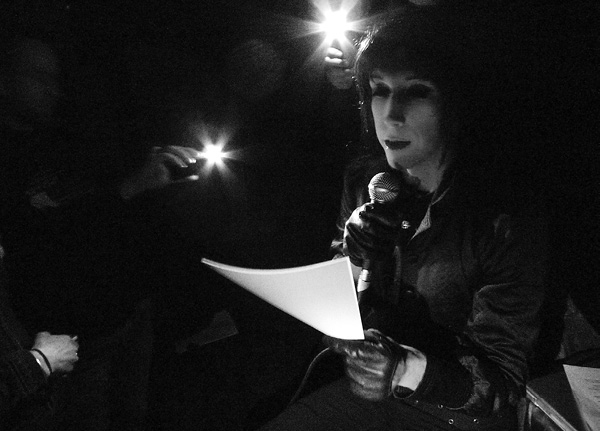
THE SECOND WORLD CONGRESS OF FREE ARTISTS
first performed on
November 20, 2011
Aarhus Kunstbygning, Aarhus, Denmark
performed once in 2011
CAMEL COLLECTIVE
Anthony Graves, Carla Herrera-Prats, Lasse Lau, Robert Ochshorn
USA / Mexico / Denmark
903060849a903060849n903060849t903060849h903060849.903060849g903060849r903060849a903060849v903060849e903060849s903060849@903060849g903060849m903060849a903060849i903060849l903060849.903060849c903060849o903060849m
camelcollective.org
THE SECOND WORLD CONGRESS OF FREE ARTISTS
CAMEL COLLECTIVE
“The Second World Congress of Free Artists” is a six-hour performance developed out of research on the 1956 First World Congress of Free Artists in Alba, Italy, organized by Asger Jorn and Pinot Gallizio, which addressed the subjects of “free art” and “industrial production.” Whereas Jorn aimed his initial critique at the pedagogical model of Max Bill’s Bauhaus, the “Second Congress” organized by Camel Collective responds to the professionalization of the subject of art and pedagogy now historicized as the “Educational Turn.” Our para-fictional performance of a congress, to borrow a term from Carrie Lambert-Beatty, is an attempt to answer the question: What new forms should the subject of art education and para-institutional educational practices in art take in the face of their absorption and depoliticization as form?
The Aarhus performance developed out of a collaboration with over 30 contributors including artists, activists, theoreticians, and collectives in the drafting of original scripts offering a variety of analyses, commentaries, and depictions of the political conditions of artistic higher education, classroom power relations, and the inherent tensions between audience and performer. Scripts were performed by six actors and ranged from a solemn appeal by a 17th-century Jesuit priest to a historical rumination on a speaker’s corner in Beirut and included performances by Michael Ashkin, Johannes Paul Raether, and Zachary Cahill.
By producing theatrical estrangements between authors, performers, and audience members, the performance of an international congress dramatizes academic conduct (the performance of authority in a knowledge economy) in an effort to produce a radical surplus of form in addition to content; the contributors were freed from the professional demands of performance. The purpose of this para-fictional framework is to generate a way of thinking that runs at an oblique angle to normative academic exchange, being both within the real of the institutional discourse on art and education as well as outside of it in the form of a fictional congress performed at a museum. The space created by the performance and the interpretations generated by collaborating with actors allowed for a critical distance toward a subject many of the contributors are regularly immersed in as specialized professionals. The “Second Congress” is a means of looking at a condition in which we find the very terms of performance art smuggled into those of artistic and pedagogical labor as demands for “increased performance.”